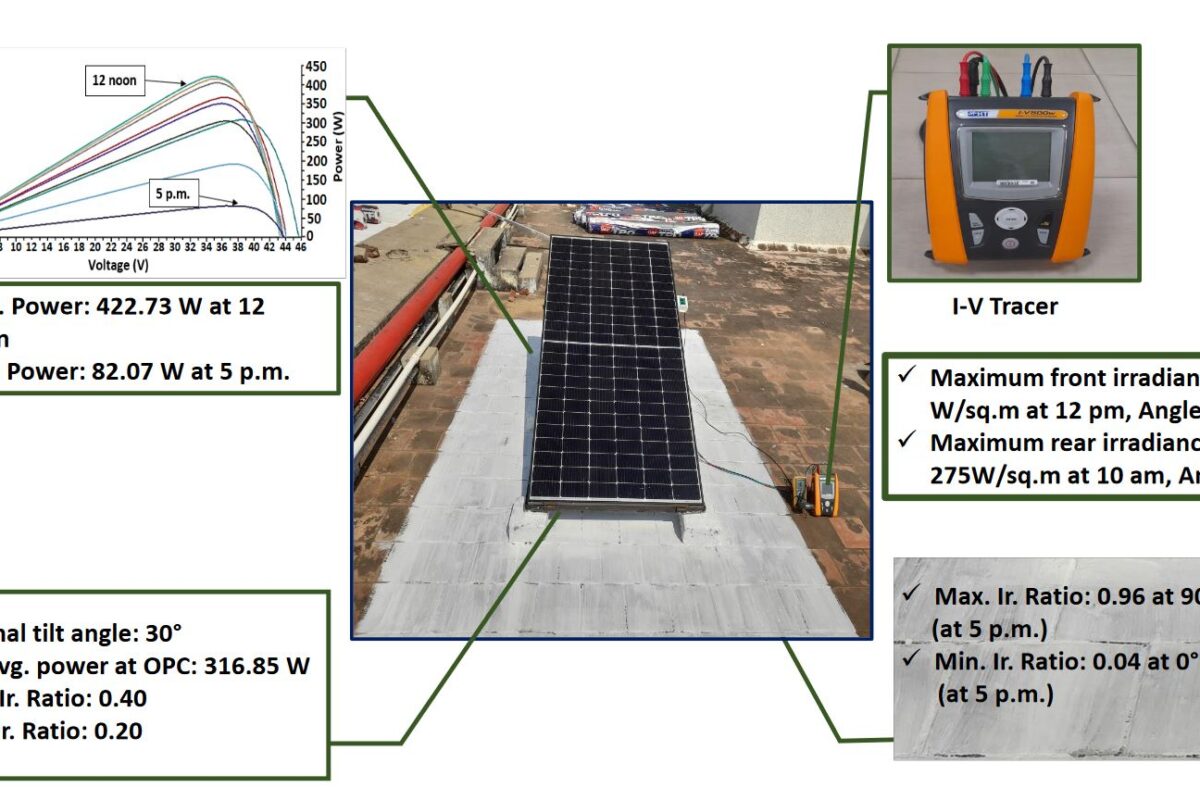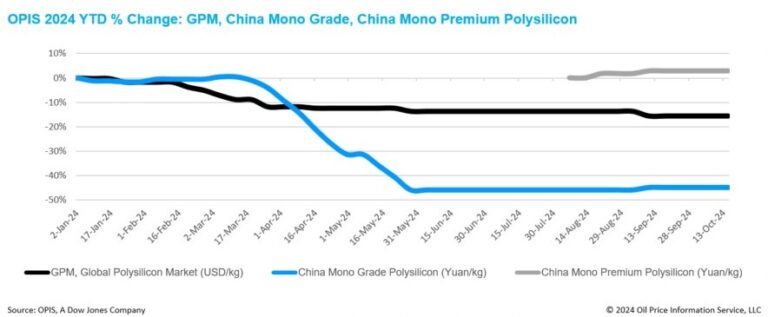In a new weekly update for pv magazineOPIS, a Dow Jones company, provides a brief overview of the major price trends in the global PV industry.
The Global Polysilicon Marker (GPM), the OPIS benchmark for polysilicon outside China, was valued this week at $22,068/kg, or $0.050/W, unchanged from the previous week, based on buy-sell indications.
On October 1, the US Department of Commerce (DOC) announced a preliminary decision on countervailing duties (CVD) for solar cells and modules imported from Vietnam, Cambodia, Malaysia and Thailand, with rates ranging from 0.14% to 292.61% , depending on the company and region. This has become the most important development in the global polysilicon market in recent months.
While market sources generally agree that CVD rates for some major Chinese manufacturers came in lower than expected, they believe that an increase in spot transactions is unlikely until the interim anti-dumping (AD) ruling on November 27, as AD rates have historically been the same. 10 to 20 times higher than the CVD figures.
While activity in the global polysilicon market remains relatively quiet as buyers await updates to AD rates before deciding whether to resume previous purchasing volumes, the effects of potential changes – such as the US presidential election, updates on a combination of solar policies , including AD/CVD tariffs for the four Southeast Asian countries, product traceability requirements and incentives for local production are reportedly already being felt, resulting in delays to solar projects.
Industry sources expect a revival of the global spot polysilicon market if the overall tax rate for certain manufacturers in the four Southeast Asian countries exporting cells and modules to the US – including Section 201 tariffs, AD and CVD – falls below 30% stays. This would allow their production capacity to be maintained to some extent.
China Mono Grade, OPIS’ assessment of mono-grade polysilicon prices in the country, remained stable this week at CNY33.625 ($4.73)/kg, or CNY0.076/W. China Mono Premium, OPIS’ price assessment for mono-grade polysilicon used for n-type ingot production, also remained stable at CNY 40.125/kg, or CNY 0.090/W, unchanged from the previous week.
The long-awaited revival of the polysilicon trading market after China’s Golden Week has yet to materialize as purchasing interest from wafer manufacturers remains weak and orders are placed only to meet basic production needs.
Trading in polysilicon futures, which was initially expected to reduce excess inventories, has had little practical effect. Chinese polysilicon producers have raised concerns about a clause in the rules of the Guangzhou Futures Exchange that bans stocking polysilicon produced more than three months earlier for futures trading, despite the fact that companies typically provide a one- to two-year warranty on their products to offer. A maximum storage period of nine months has also been set, causing some traders to postpone their purchasing plans as the current lack of trading activity has weakened their confidence in stockpiling.
Major Chinese polysilicon producers are intensifying their control over prices and market share, especially a leading polysilicon producer from Siemens plans to ramp up its new production capacity in the fourth quarter. In addition, a major producer of FBR granular polysilicon recently increased its operating speed, sources said.
Insiders agree that continued efforts are needed to address excess polysilicon capacity. The most likely and optimistic scenario for the Chinese polysilicon market in the fourth quarter is to maintain current prices.
OPIS, a Dow Jones company, provides energy prices, news, data and analysis on gasoline, diesel, jet fuel, LPG/NGL, coal, metals and chemicals, as well as renewable fuels and environmentally friendly feedstocks. It acquired price data assets from Singapore Solar Exchange in 2022 and now publishes the OPIS APAC Solar Weekly Report.
The views and opinions expressed in this article are those of the author and do not necessarily reflect those of the author pv magazine.
This content is copyrighted and may not be reused. If you would like to collaborate with us and reuse some of our content, please contact: editors@pv-magazine.com.
Popular content



